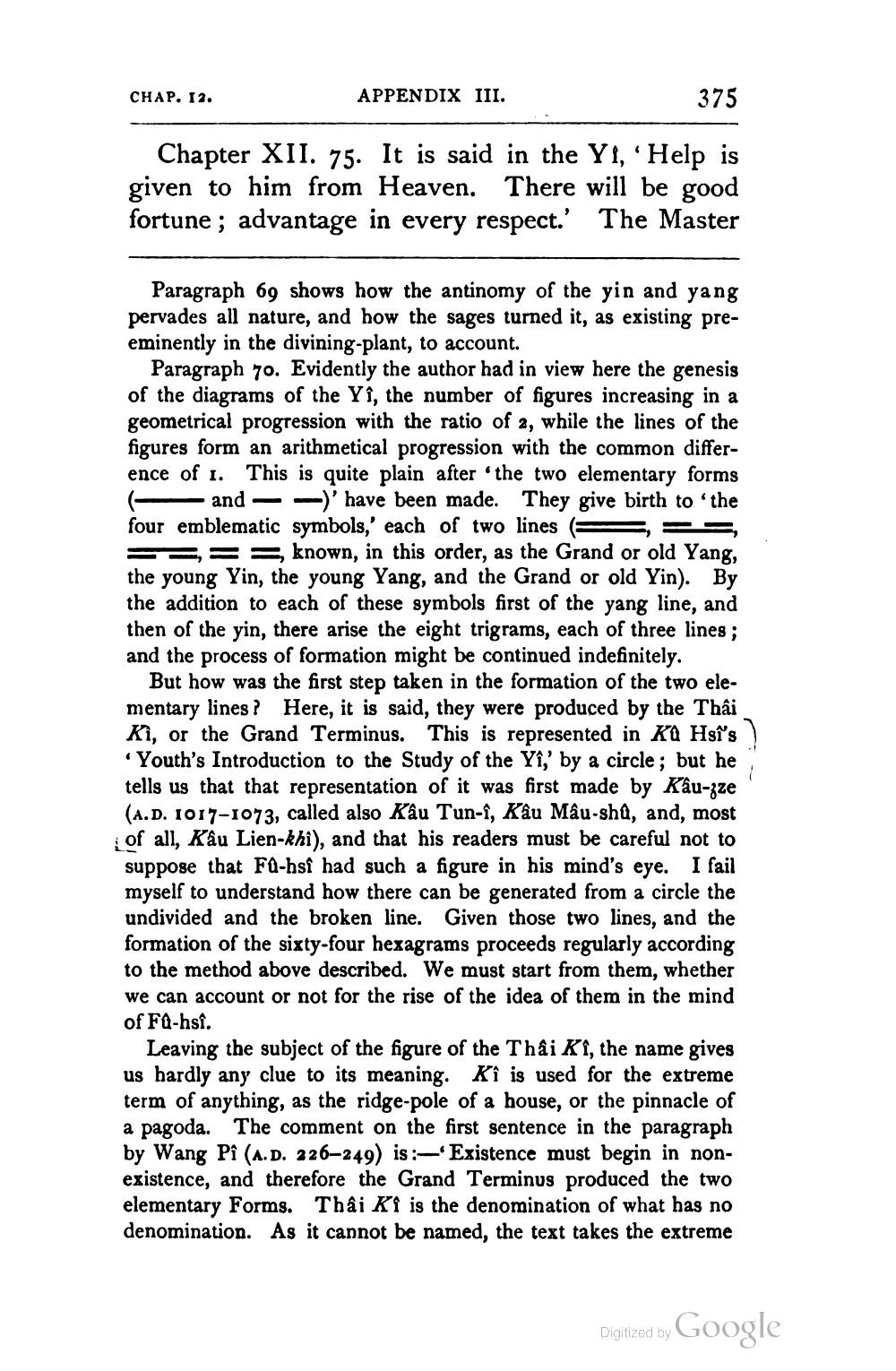________________
CHAP. 12.
APPENDIX III.
375
Chapter XII. 75. It is said in the YI, `Help is given to him from Heaven. There will be good fortune; advantage in every respect.' The Master
Paragraph 69 shows how the antinomy of the yin and yang pervades all nature, and how the sages turned it, as existing preeminently in the divining-plant, to account.
Paragraph 70. Evidently the author had in view here the genesis of the diagrams of the Yi, the number of figures increasing in a geometrical progression with the ratio of 2, while the lines of the figures form an arithmetical progression with the common difference of 1. This is quite plain after the two elementary forms
and - --) have been made. They give birth to the four emblematic symbols,' each of two lines (= = = = = = =, known, in this order, as the Grand or old Yang, the young Yin, the young Yang, and the Grand or old Yin). By the addition to each of these symbols first of the yang line, and then of the yin, there arise the eight trigrams, each of three lines; and the process of formation might be continued indefinitely.
But how was the first step taken in the formation of the two elementary lines? Here, it is said, they were produced by the Thai Ki, or the Grand Terminus. This is represented in KQ Hsi's
Youth's Introduction to the Study of the Yi,' by a circle ; but he tells us that that representation of it was first made by Kâu-ize (A.D. 1017-1073, called also Kâu Tun-î, Kâu Mâu-shû, and, most of all, Kau Lien-khi), and that his readers must be careful not to suppose that F0-hsi had such a figure in his mind's eye. I fail myself to understand how there can be generated from a circle the undivided and the broken line. Given those two lines, and the formation of the sixty-four hexagrams proceeds regularly according to the method above described. We must start from them, whether we can account or not for the rise of the idea of them in the mind of FQ-hsi.
Leaving the subject of the figure of the Thai Ki, the name gives us hardly any clue to its meaning. Kî is used for the extreme term of anything, as the ridge-pole of a house, or the pinnacle of a pagoda. The comment on the first sentence in the paragraph by Wang Pi (A.D. 226–249) is: Existence must begin in nonexistence, and therefore the Grand Terminus produced the two elementary Forms. Thai Ki is the denomination of what has no denomination. As it cannot be named, the text takes the extreme
Digitized by Google




